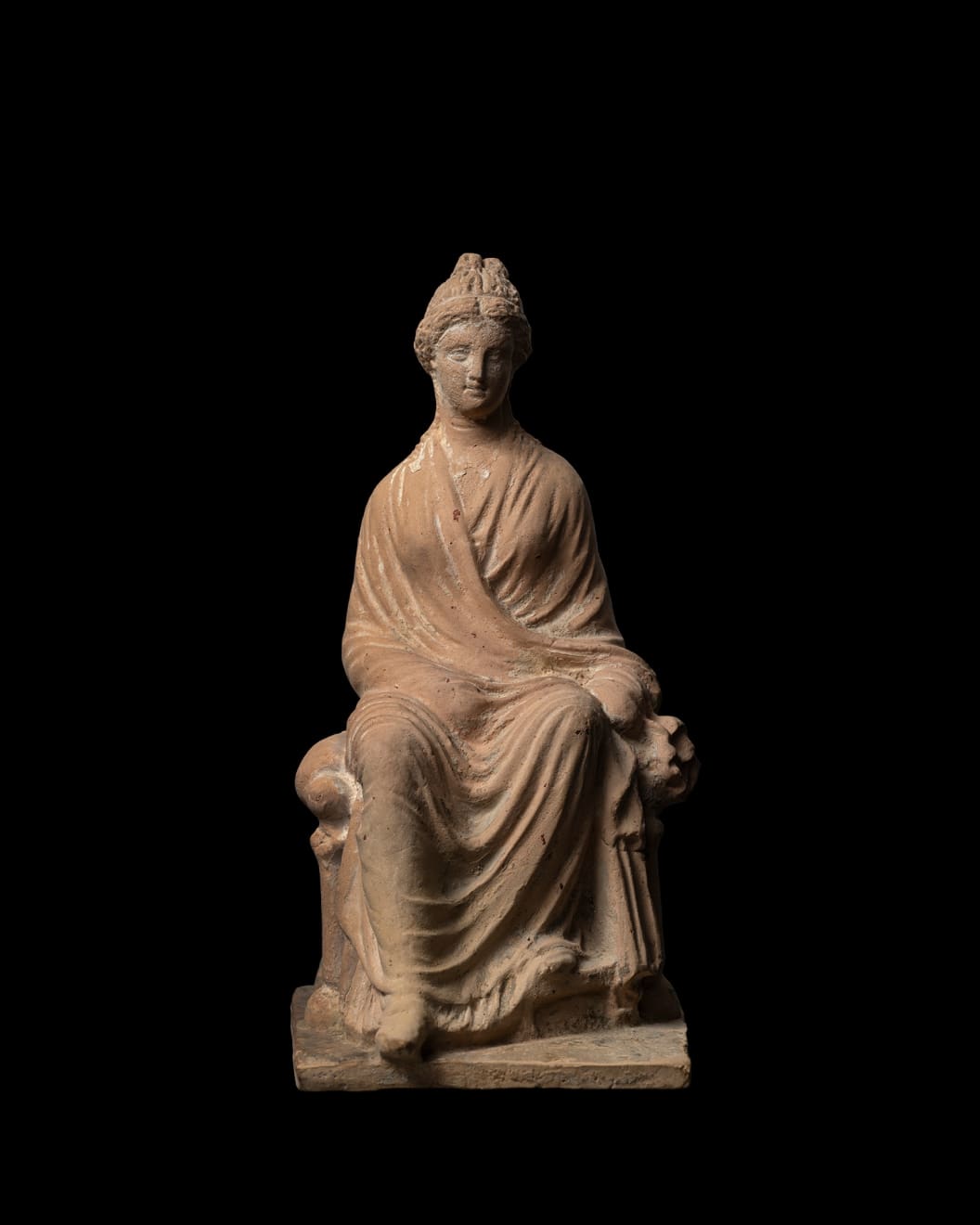Greek
A Greek terracotta seated female figure, Hellenistic, circa 3rd century BC
Terracotta
Height: 16.6 cm
The young woman is depicted seated on a cushioned stool, enveloped in a himation, with her feet emerging from beneath. Her centrally parted hair is drawn away from her face...
The young woman is depicted seated on a cushioned stool, enveloped in a himation, with her feet emerging from beneath. Her centrally parted hair is drawn away from her face into a circular plait at the back, with tresses falling onto her shoulders.
Provenance
Dr. Hans Stenzl (1880 Munich, Germany - 1980 Riehen, Switzerland) Collection, acquired in 1959Private collection, London, UK, acquired in 1980 from the above
Dr Stenzl was a research chemist at F. Hoffmann-La Roche & Cie. AG and J.R. Geigy AG; he was the inventor of important pain-relieving and anti-rheumatic medications. He formed his collection of antiquities between 1953-1968.
Literature
Tanagra figurines, named from the site in Boeotia where they were first found are arguably the most sought after terracottas of all periods and styles. They portray graceful young men and women of great physical beauty, standing or sitting in statuesque poses. Their conception was undoubtedly influenced by Praxiteles who was active in Athens circa 370-330, and who had a studio at Thespiae in Boeotia.Tanagras were modelled with considerable naturalism, the women wearing chitons and himations tightly stretched round the contours of the body. Figures of seated women are more unusual than their standing counterparts.
The typical Tanagra figure is made up of a number of different parts, separately moulded and assembled before firing. After firing, the Tanagra figurines were brightly coloured in a naturalistic manner with water-soluble paints. Red was used for hair, lips, shoes, and accessories, and black marked eyebrows, eyes, and other details. The flesh was painted a pale orange pink, and a reddish purple made from rose madder often was used for the drapery.
For further discussion see, J.P. Uhlenbrock, The Coroplast's Art, Greek Terracottas of the Hellenistic World, New York, 1990. For a similar example of a seated woman from Tanagra see, British Museum, London, acc. no. 1899,0218.64.



